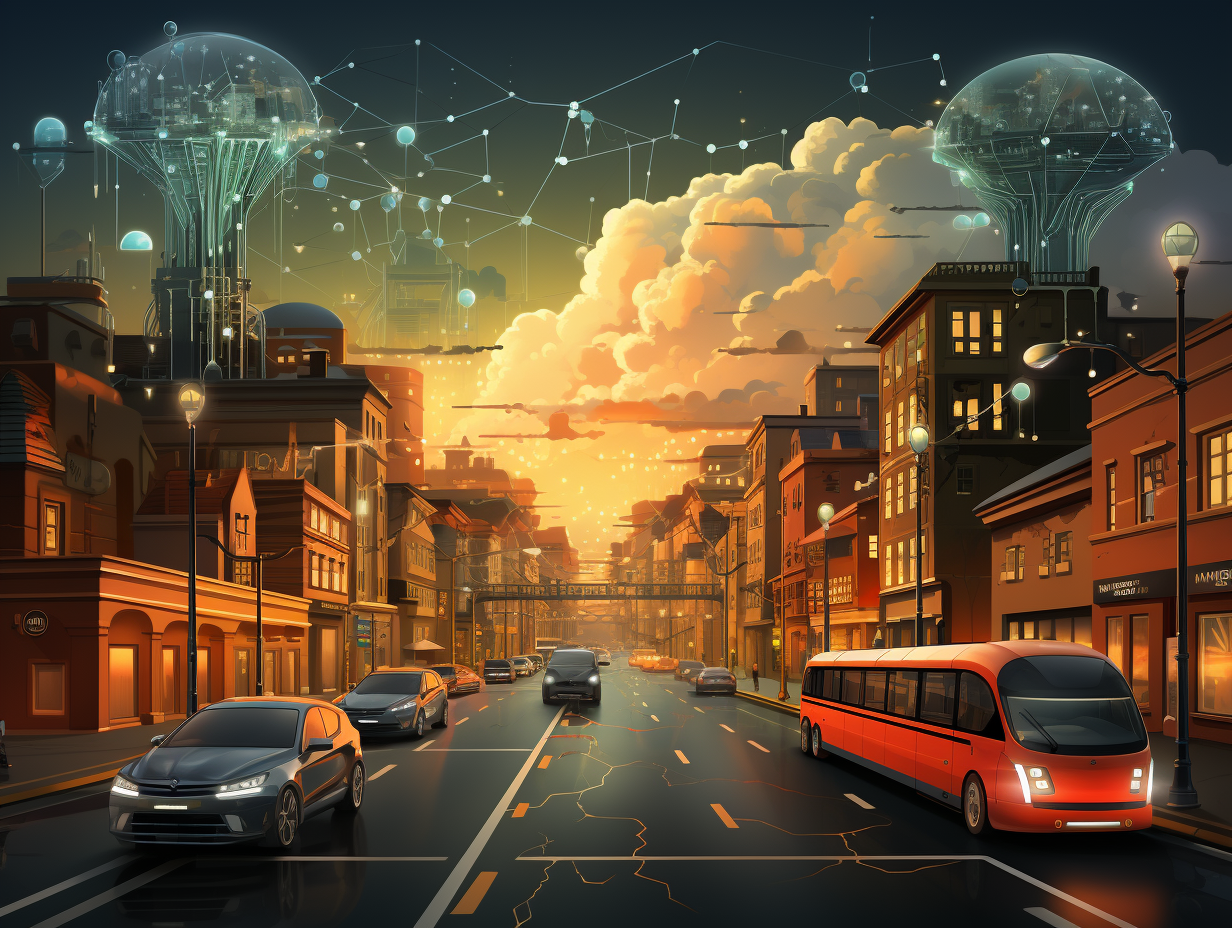The Future of AI in Transportation: A Confluence of Blockchain and NFTs
As we stand on the precipice of the Fourth Industrial Revolution, the transportation sector is undergoing a transformative shift. The integration of Artificial Intelligence (AI), Blockchain, and Non-Fungible Tokens (NFTs) is revolutionizing the way we perceive and interact with transportation systems. This article delves into the future of AI in transportation, the role of blockchain in securing information, and how NFTs can expedite asset purchases.
AI in Transportation: A Paradigm Shift
Artificial Intelligence, with its ability to learn, reason, and self-correct, is driving significant advancements in the transportation sector. From autonomous vehicles and smart traffic management systems to predictive maintenance and enhanced logistics, AI is reshaping the transportation landscape.
Autonomous vehicles, powered by AI, are no longer a distant dream but a burgeoning reality. These self-driving vehicles rely on AI algorithms to navigate, avoid obstacles, and make split-second decisions, thereby improving safety and efficiency.
AI is also instrumental in optimizing traffic management systems. By analyzing real-time data, AI can predict traffic congestion and suggest optimal routes, reducing travel time and carbon emissions.
In the realm of logistics and supply chain management, AI enables predictive maintenance, reducing unexpected breakdowns and improving operational efficiency. AI algorithms can analyze data from various sensors to predict potential malfunctions, allowing for timely maintenance. This is a natural extension of the impact of AI on everyday life, as we've previously explored in our article on The Impact of Artificial Intelligence on Everyday Life.
Blockchain: A Secure Ledger for Transportation
While AI is the brain behind the future of transportation, blockchain is the backbone, providing a secure and transparent platform for storing and retrieving information.
Blockchain, a decentralized ledger technology, allows for the secure storage of data across multiple nodes. Each block in the chain contains a timestamp and a link to the previous block, making it virtually tamper-proof. This makes blockchain an ideal solution for storing information that may need to be retrieved by various parties in a secure manner.
In the context of transportation, blockchain can be used to record and verify transactions, track the movement of goods, and ensure the authenticity of spare parts. For instance, in a supply chain, blockchain can provide real-time tracking of goods, from the manufacturer to the end consumer, ensuring transparency and reducing the risk of fraud.
NFTs: Streamlining Asset Purchases
Non-Fungible Tokens (NFTs), a type of digital asset that represents ownership of a unique item or piece of content, are making waves in the digital world. In the transportation sector, NFTs can be used to represent ownership of assets such as vehicles, tickets, or even parking spaces.
NFTs can expedite the process of buying and selling assets. For instance, the purchase of a vehicle can be represented as an NFT, which can be transferred from the seller to the buyer instantly upon payment, eliminating the need for lengthy paperwork. Similarly, tickets for public transportation or parking spaces can be tokenized as NFTs, allowing for seamless and secure transactions. The evolution of NFTs stretches far beyond digital art, heralding a new era in the digital world, as we've previously discussed in our article on The Evolution of NFTs: Beyond Digital Art.
The Confluence of AI, Blockchain, and NFTs
The integration of AI, blockchain, and NFTs can create a robust and efficient transportation ecosystem. AI can drive the operations, blockchain can secure the data, and NFTs can streamline transactions.
For instance, in a blockchain-based transportation system, an AI-powered autonomous vehicle can be tokenized as an NFT. The vehicle's data, such as its maintenance history and mileage, can be stored securely on the blockchain. When the vehicle is sold, the NFT representing the vehicle's ownership can be transferred to the buyer, ensuring a transparent and efficient transaction.
Moreover, AI can work in conjunction with blockchain and NFTs to enhance the user experience. For example, an AI algorithm can analyze a user's travel patterns and suggest personalized travel plans.The user can then purchase the suggested plan as an NFT, ensuring a seamless and personalized travel experience.
In conclusion, the future of transportation lies at the intersection of AI, blockchain, and NFTs. As these technologies continue to evolve and integrate, we can expect a transportation ecosystem that is not only more efficient and secure but also more personalized and user-friendly. The road ahead is indeed exciting, and we are just at the beginning of this transformative journey.
By utilizing our affiliate links below, you contribute to our support:
Amazon: Help Support Us When You Shop on Amazon.com
Mint Mobile: Try Mint Mobile For As Low As $15/Month
Robinhood: Earn Free Stocks When You Sign Up
Webull: Earn Free Stocks When You Sign Up
Skylum: Save 30% on Luminar Neo - Premium Photo Editing Software

